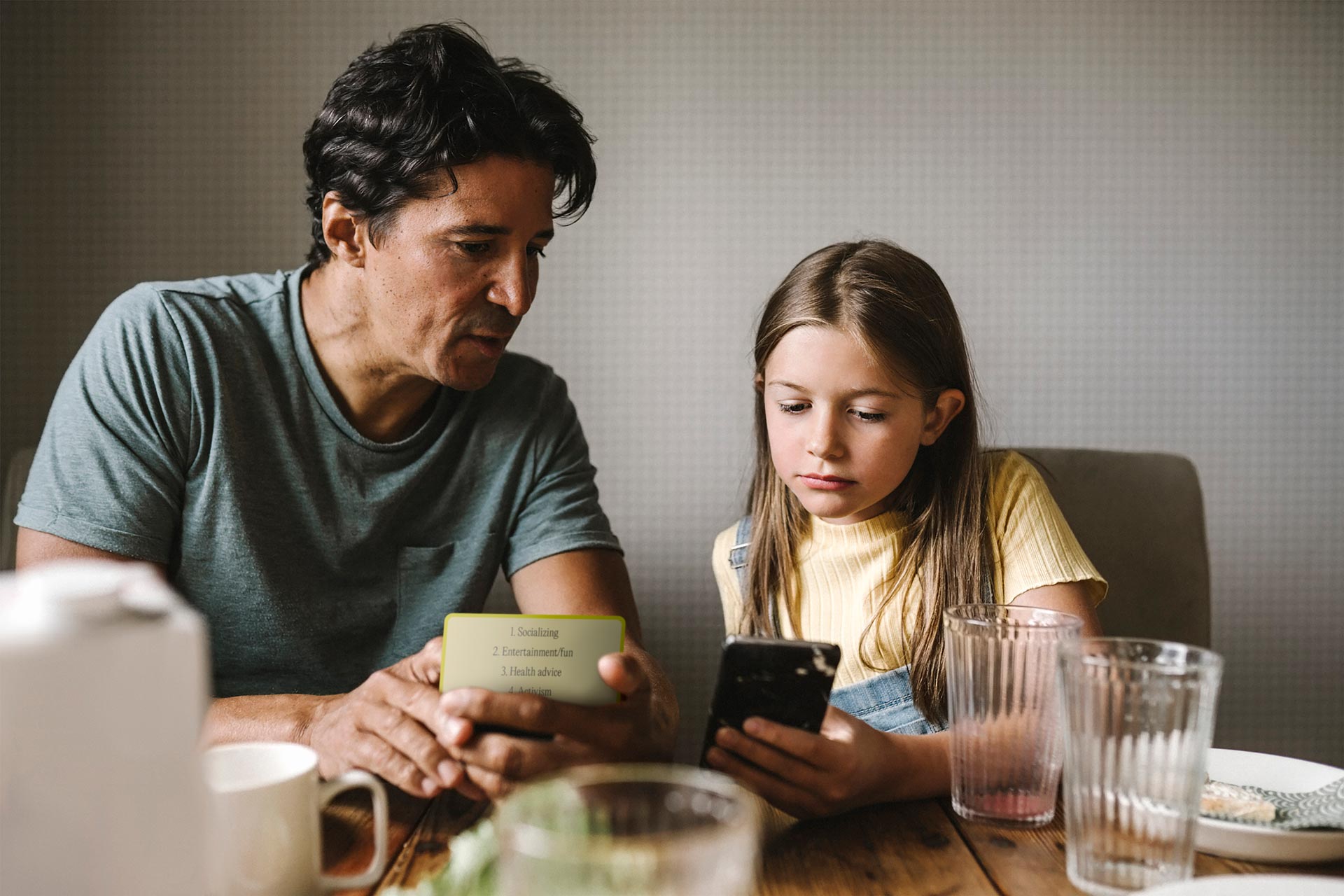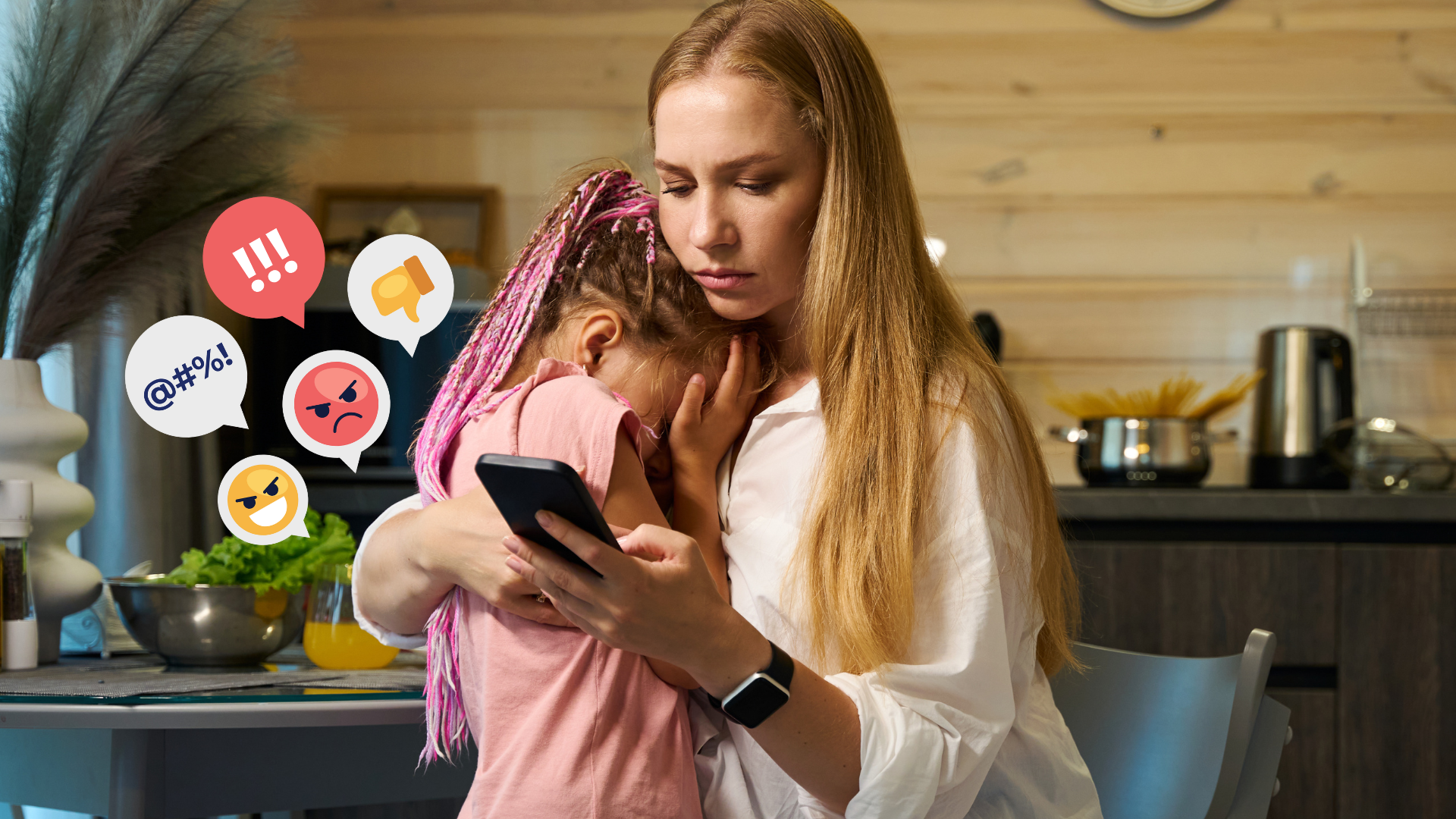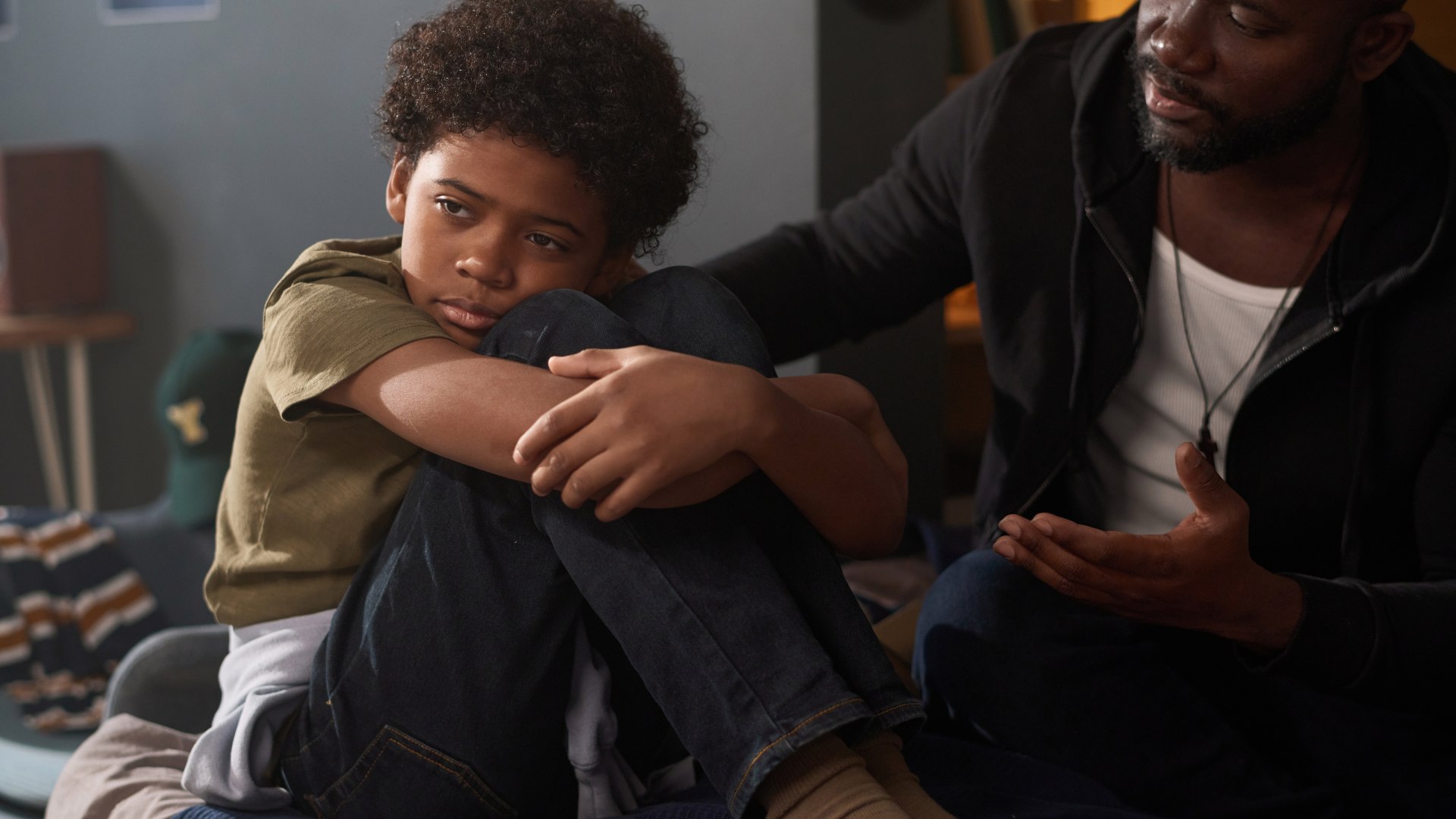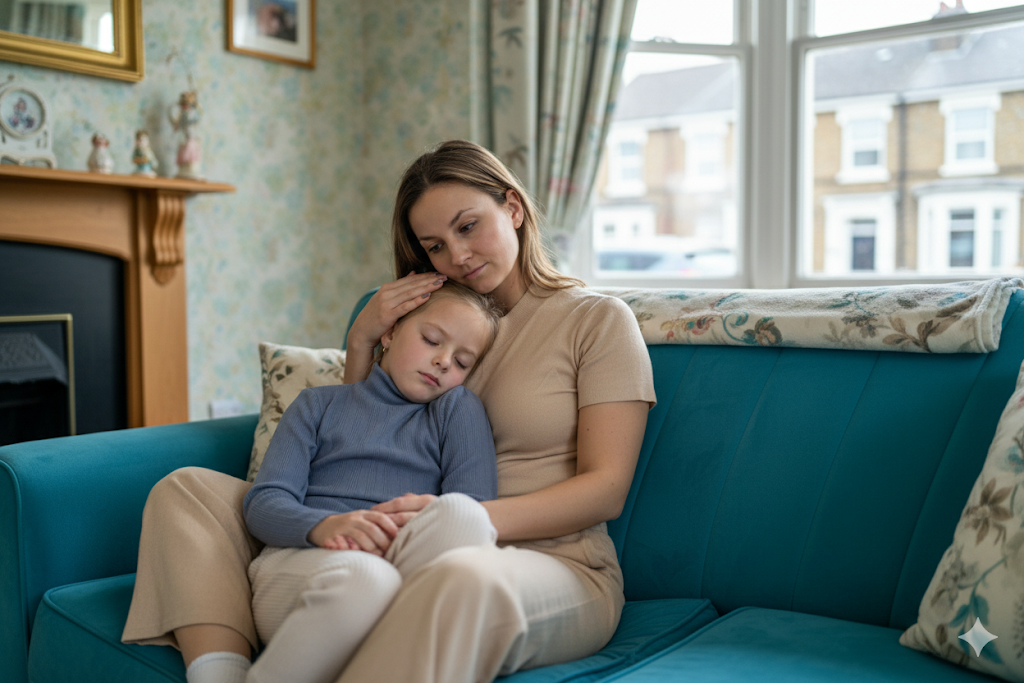How to Help Your Child Deal with Cyberbullying: 8 Tips for Parents
Cyberbullying is one of the harmful situations our children can face online. It’s not only painful while happening, but the effects of online bullying can last into adulthood, leaving emotional scars.
It can seem like a hopeless situation to both the victims and their parents, struggling with how to stop cyberbullying. As parents, we want to do everything possible to protect our children. But dealing with cyberbullying can leave us feeling powerless and unsure of how to help.

The challenges of dealing with cyberbullying are many. Sometimes online bullying is carried out by anonymous bullies. This can feel scary and overwhelming, not knowing who is behind the harassment.
Additionally, many parents may not even realize their child is a victim of cyberbullying. Some children keep it hidden from their parents for a long time. At other times, parents may struggle to grasp the seriousness of the situation, overlook the signs of cyberbullying, or listen when their kids try to tell them.
Awareness of cyberbullying on digital platforms is a big part of online safety for kids. Unlike in-person bullying, online harassment can follow children wherever they go, making it harder for adults to detect.
It might also be hard for adults to understand what cyberbullying can look like. It can take on many forms and be closely linked to the different ways of communicating online that not all adults are familiar with.
The harassment is not always obvious but can, for example, take the shape of being ignored and excluded online. This is why knowing about the different examples of cyberbullying is key to supporting our children and understanding this problem.
In this article, we will provide you with practical steps on how to stop online bullying and support your child throughout the process.
1. Listen and give space to their version of the story
If your child confides in you about being cyberbullied, first and foremost, believe them. We might not always understand or agree that something is a problem immediately, but we can acknowledge their version of the situation and their emotional response to the situation.
At the same time, if we become very upset or sad about what we hear, we should keep our feelings about the situation out of the picture while we hear them out. We should take some time to dive into the story and understand it from their perspective, to get a better understanding.

Some parents may unintentionally downplay their child's experience in an attempt to provide reassurance that “it probably isn´t that bad” or “it will pass soon”. However, it's crucial to acknowledge their feelings and let them know you're there to help.
That said, it might be the case that there is a different version of the story, and your child might have misunderstood something. But before seeing the situation in a bigger picture and assessing the circumstances from an adult perspective, we need to hear them out and acknowledge their experience and feelings.
We can do that without agreeing and adding to the drama of the story, for example, by saying “Yes, I can understand that it must feel terrible to feel that everyone hates you. What did they do to give you that feeling?”
This way we focus on the child's experience without downplaying it, what would be the case if we had said “Don’t be silly, of course everyone doesn’t hate you. Why would you think that just because of that message?”
Helping kids talk about online bullying consists of listening to them and knowing how to talk to them about cyberbullying. A crucial part of this is allowing them to explain their version without interruption or judgment, and acknowledging any feelings they may have.
2. Get to know the details of the situation
When talking with our child about the situation, we want to get an idea of what happened. Gently, we can ask them about the details to get specific answers on what happened, when it started, and who is behind it.

Be aware that it can be very sensitive for a child to repeat or show what has been sent to them or posted about them. It might also be hard for us to see or read. It’s important to keep calm and focus on validating our child's feelings about the situation instead. We can emphasize that we understand that these messages made them sad, scared, or hurt, and let them know that anyone would have felt that way too.
Besides having our child unload the weight of having to deal with the harassment by themselves, this is also a way for us to understand the situation better and find a way to solve it.
3. Give support and look for solutions
Often, kids will feel that being bullied is shameful. It can be hard to repeat the hurtful things posted or written about them. Kids can feel it’s their fault for being bullied, and that the bullies are right about the mean things they say. So it can be very uncomfortable for a child, opening up about cyberbullying, to explain what has happened.
We need to reassure them that there is nothing wrong with them and it’s not because of who they are, what they look like, or something they did that they are being bullied. Bullying can never be justified.
A great support for a child dealing with bullying is coming up with a plan together about how to handle the situation. This way they can see that there is a solution and that you will help them. Together you can explore what can be done, and how to take those steps.
This could, for example, be how to tell the school, collect evidence, block the person, or contact the parents of the bullies, whatever is relevant to your situation. An older child might benefit from taking some of these steps independently, but with the support of you or another adult.
4. Collect evidence
If there is one good thing to say about cyberbullying, it is that it can be easy to collect evidence and link it to the bully. This is done by taking screenshots of messages, comments, posts, and profiles before blocking or deleting anything.
Taking screenshots can be especially necessary if your child receives messages on Snapchat that disappear after they are read. It might be a good idea to change the settings on the app so messages are kept longer.
The evidence of the bullying can be used to show the responsible adults proof of what happened. This might be someone at the school or the bully’s parents. Sometimes it’s necessary to report to the platform itself or even to the police, depending on the situation.
5. Contact responsible adults
If the cyberbullying involves classmates or kids from the school, reach out to the responsible adults in their lives, such as parents, teachers, or school administrators. While bullying is a child's problem, it is always an adult's responsibility to intervene and find solutions. There is often a bullying policy in schools that can offer help if kids from the school are involved. We need to be our child's advocate and persist in finding a resolution.

How to report bullying at school can vary depending on the situation. In serious cases, it can be necessary to involve school administrators or the principal. At other times, it’s enough to get the help of a trusted teacher or simply just talking to the parents and the bullies themselves.
Even if the online bullying doesn't involve kids from the school, it can be a good idea to let the teachers know what your child is going through. This way, they can provide support in a difficult situation and better understand your child's changed behavior and well-being.
Older kids might benefit from handling the situation themselves. This could be by approaching the bullies with help from a teacher in school-related situations. In case of misunderstandings or lighter cases, having a talk face-to-face, maybe with the presence of parents or teachers, can be enough to solve it.
6. Report and block in the platforms
It is possible to report harmful messages, hate groups, or inappropriate content directly on the platforms where they occur. Users, profiles, accounts, phone numbers, etc., behind the harassment can also be blocked.

Teach your child how to report cyberbullying and to use blocking features, depending on their age. But remember to always take screenshots as evidence before users are blocked or messages and content are deleted. When someone is blocked, they can’t find or contact you, but you can’t see their profile or the content they shared either, and deleted messages are not easily retrieved.
When you report a user, a group or some content, the platform investigates further to see if the user is violating any rules and should be banned from the platform. Sometimes the platform can remove the violating content you reported or close down a profile or group.
You can be lucky that blocking the bully will be enough, and they won’t have other ways of reaching your child. Especially when you don't know the bully or they are anonymous, it might be enough to block and maybe report them to the platform to get out of the situation and solve the issue.
7. Take threats seriously
If your child receives violent threats or death threats, take them seriously and report them to the authorities. Online threats against children are often illegal, and there can be legal punishment for cyberbullying of this kind.
Some photos or videos taken or shared without consent can also be illegal. Be sure to document everything with screenshots. It can be used to assess if it is a case where online bullying is a crime.
Be aware that if the photos or material involve nude images of your child it can be illegal for you to store these screenshots for evidence in some parts of the world. However, in most countries, it will be advised to keep this kind of evidence.
8. Be available for ongoing conversations
There are often many difficult thoughts and feelings connected with being bullied that are too heavy for a child to handle on their own. Children will need a place to go for support and be encouraged not to keep what they are going through to themselves.
At times, all we need to do to get our kids to open up to us is to be available without distractions. We can create moments of being together without being disturbed, like going for a walk, cooking together, or being available for conversation on a quiet car ride.
Sometimes it can be a good idea to consult a counselor of some kind. Often, it can be easier for kids to talk to a stranger who isn’t emotionally involved in the situation.
Supporting a child who is cyberbullied requires regular check-ins and emotional support, especially in severe cases. Encourage your child to open up to other trusted adults or friends as well. Talking about it helps.
9. Strengthen positive relationships
Cyberbullying can severely impact a child's self-esteem, making them feel isolated and unliked. It is easy with time to believe all the bad things said about them. So, making sure your child is surrounded by positive relationships is vital to counter the negative voices and self-image.

This can be relationships within the family, friends, or within community activities, or engaging in sports or activities your child is good at or loves. Positive and safe online communities can also provide a supportive network for kids, as a place to meet like-minded allies.
These can all be great activities to help boost a child's self-esteem in a vulnerable time, and a way to help them feel valued and loved.
Open and honest communication is our best safety tip
The best way to understand what your child experiences online is through ongoing conversations. We should work towards establishing a relationship of trust and a habit of taking part in their online life and activities by showing curiosity and interest in what they are up to.

Regular discussions and activities can make it easier for children to come to us when they need help. Likewise, it will be a great gateway to discussing online safety at home regularly.
We know it’s not always easy to keep up with what kids are doing online or know what to ask about. This is why we created the Raising Digital Citizens Family Conversation Cards.
They provide you with an entire section dedicated to discussing cyberbullying and ways to handle it. These cards help families all over the world engage in meaningful discussions about online experiences, setting the foundation for safe and responsible digital behavior.





